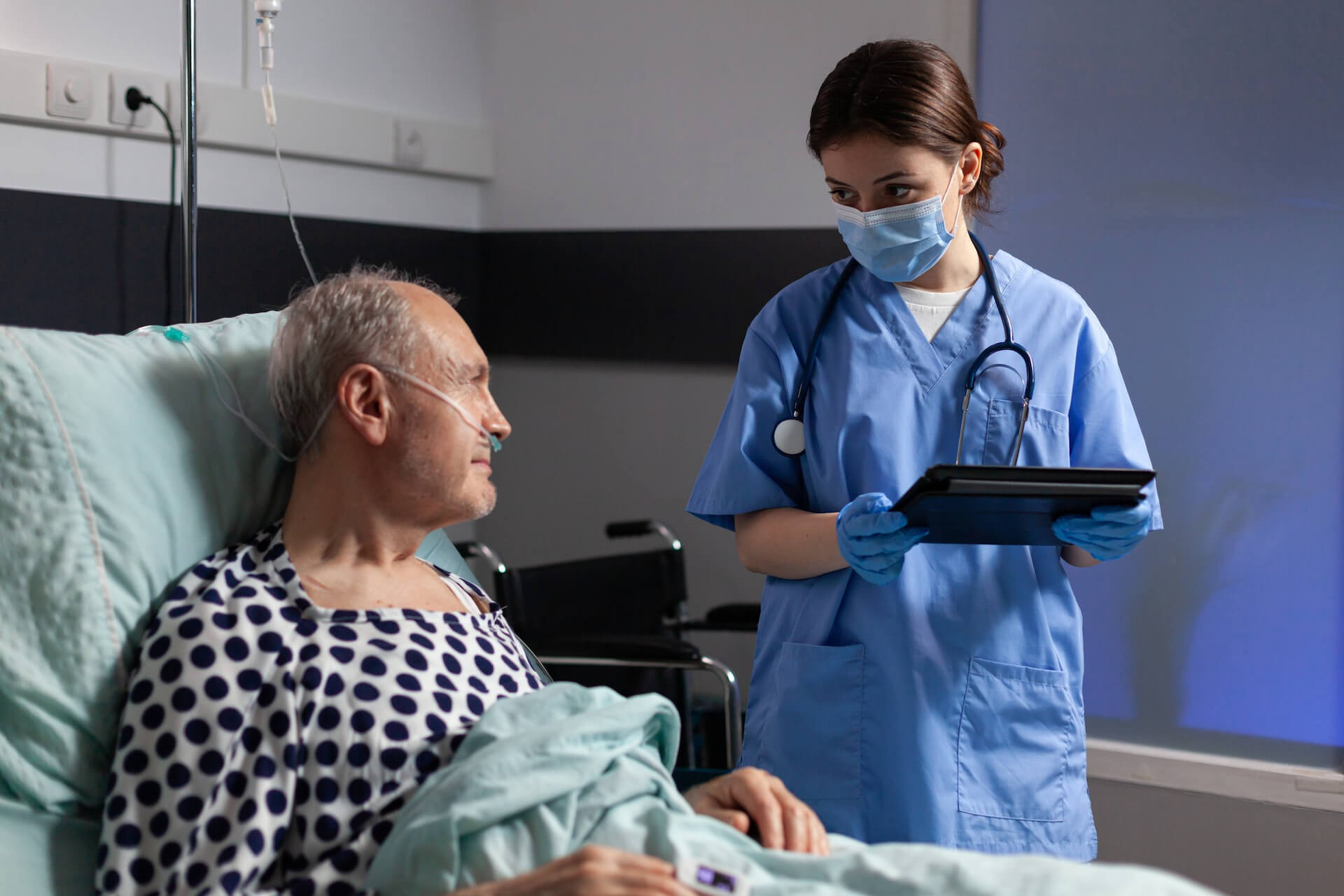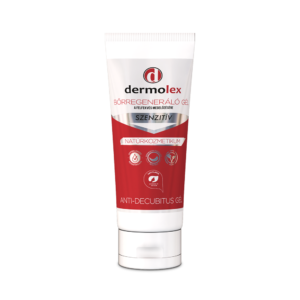How do bedridden patients go to the bathroom? For those that are bedridden using conventional toilets is often impossible. Being unable to use a toilet independently can have a negative impact on the patient’s psychological well-being and physical health. Special medical equipment can help bedridden patients to use the toilet safely and with dignity. Learn more about helping immobile patients to use bedpans or urinals!
Assisting immobile patients to the bathroom
Bed-bound patients often prefer going to the bathroom with the assistance of a caregiver instead of using a bedpan or a urinal. If the medical condition and the physical status of the patient allow walking, then the bedridden patients should be assisted to the bathroom.
Being confined to bed and limited physical activity can lead to weakness and reduced coordination skills. Bed-bound patients may need the support of a caregiver to get out of the bed and walk to the restroom. Due to impaired mobility, some patients need help with cleaning up after using the toilet.
Tips for assisting immobile patients to the bathroom:
- Consider using a bedpan or urinal if the patient is too weak for walking!
- Toilet papers and wet wipes should be available in the bathroom!
- Grab rails should be installed in the bathroom as they provide the patient with extra support and stability.
- A wheelchair or a walker can be used to assist the patient to the toilet.

Bedridden patient toilet options: what could be used if a person is unable to walk to the toilet?
Catheters
Catheters are medical equipment used for draining urine by inserting a tube through the urethra and into the bladder. Catheters are not suitable for long-term usage as they increase the risk of urethral infection. Only medical professionals can insert catheters.
Adult diapers
Adult diapers, also known as adult nappies, allow the patient to defecate and urinate without using a toilet. There are two types of adult diapers:
- Diapers with tabs: Diapers with tabs are tight-fitting absorbent undergarment that efficiently helps with leaks. Immobile patients are recommended to use diapers with tabs since they are easier to put on.
- Pull-up diapers: Pull-up diapers are less bulky and more comfortable undergarments. Bedridden who are able to stand up safely are advised to use pull-up diapers.
Bedpans
Bedpans are receptacles used for the toileting of immobile patients. Bedpans are usually made of plastic, metal, ceramic, and glass. The most commonly used stainless metal bedpans are easy to clean and enduring, however, patients often find them cold, difficult to use, and discomforting. More ergonomic plastic bedpans offer a comfortable experience.
Fracture bedpans were developed for bedridden patients with severe hip injuries. The low-profile bedpans have one flat side which makes urinating and defecating easier for patients who are unable to roll over.
Portable commodes
Portable commodes, also called bedside commodes, are mobile toilet chairs. If the bed-bound patient can safely stand up but is unable to walk to the bathroom, then a portable commode is the most dignified option.
Bedridden toilet system
Toilet care can be extremely stressful for immobile patients and caregivers as well. Bedridden toilet systems offer an innovative technological solution to the issues of toilet care.
A case study, published in the journal of Health and Technology, demonstrated the positive effects of utilizing a bedridden toilet system. According to the findings of the paper, using a bedridden toilet system had a positive impact on the psychological well-being of a patient.
“The toilet-integrated medical electric bed was easy to use for an 84-year-old bedridden male patient. He was able to urinate and defecate without the help of a carer. Independent urination and defaecation helped restore his dignity considerably. This medical bed with an embedded toilet could be a promising solution for excretion care of bedridden patients.”
Preventing bedsores bedridden patients
Bedsores, also known as pressure ulcers and pressure injuries, are caused by constant and prolonged pressure on the skin. Pressure ulcers occur when a person sits in a wheelchair or lies in a bed for an extended amount of time. Pressure limits blood flow to dendritic cells, which stop functioning and die. Bedsores are common among Bedridden patients. Using moisturizers and special creams on the dry skin of bed-bound patients is one of the most efficient ways of preventing pressure injuries.
Applying the dermolex skin regenerating gel can lower the risk of developing pressure injuries. Carefully selected ingredients of the gel refresh and regenerate the skin exposed to long-term pressure. The gel formulation is rapidly absorbed and will not stain the clothes or the bed linen as it does not contain any colorings or fragrances. The product complies with Regulation (EC) No 1223/2009 on cosmetic products. It is a ’leave-on product, not to be rinsed when used as intended. The product was studied and evaluated by the Department of Dermatology and Allergology of the Medical and Pharmaceutical Centre of the Faculty of Medicine, Szeged University. The investigators concluded that dermolex gel was an efficient complement to the therapy of bedsores.


